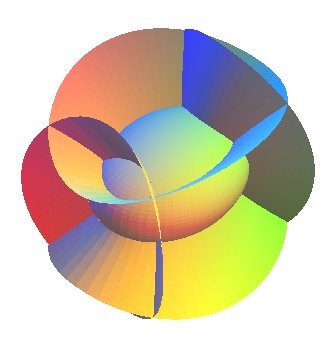The quadric is said to be non degenerate if the homogeneous quadratic form
When the rank of this form is equal to 3, we get the cones and cylinders of second degree, and when it is less than or equal to 2, the quadric is the union of two planes.
Reduced Cartesian equation (up to isometry) of the quadrics:
with
.
I) Real affine classification.
Up to an affine transformation, there are 9 - non empty,
not decomposed, and not reduced to a point- real cases, 5 non degenerate
cases and 4 of rank 3:
1) The three
are nonzero and have the same sign: ellipsoid
with reduced equation
.
2), 3) and 4) The three
are nonzero but do not have the same sign: one-
or two-sheeted hyperboloid
or elliptic cone
(of rank 3) with respective reduced equations
.
5), 6) One of the
is equal to zero, the other two have the same sign: elliptic
paraboloid:
or elliptic
cylinder (of rank 3):
.
7), 8) One of the
is equal to zero, the other two have opposite signs: hyperbolic
paraboloid:
or parabolic cylinder
(of rank 3):
.
9) Two of the
are equal to zero, the other one is not: parabolic
cylinder (of rank 3):
.
II) Real projective classification.
There remain only two non-empty types:
ellipsoid, elliptic paraboloid, two-sheeted hyperboloid: non degenerate quadrics with elliptic points |
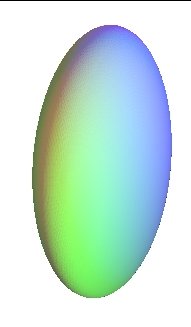 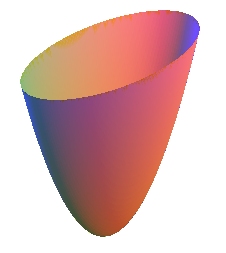 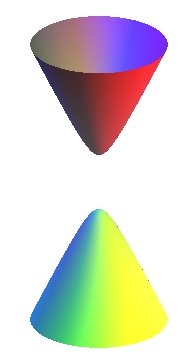
Up to homography, these 3 quadrics are identical! |
| and one-sheeted hyperboloid hyperbolic paraboloid: non degenerate ruled quadrics (with hyperbolic points) |
 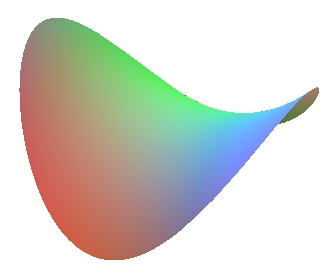
Ditto. |
and one non-empty type of rank 3: .
III) Complex projective classification:
One non-degenerate type:
and one type of rank 3:
.
 .
.